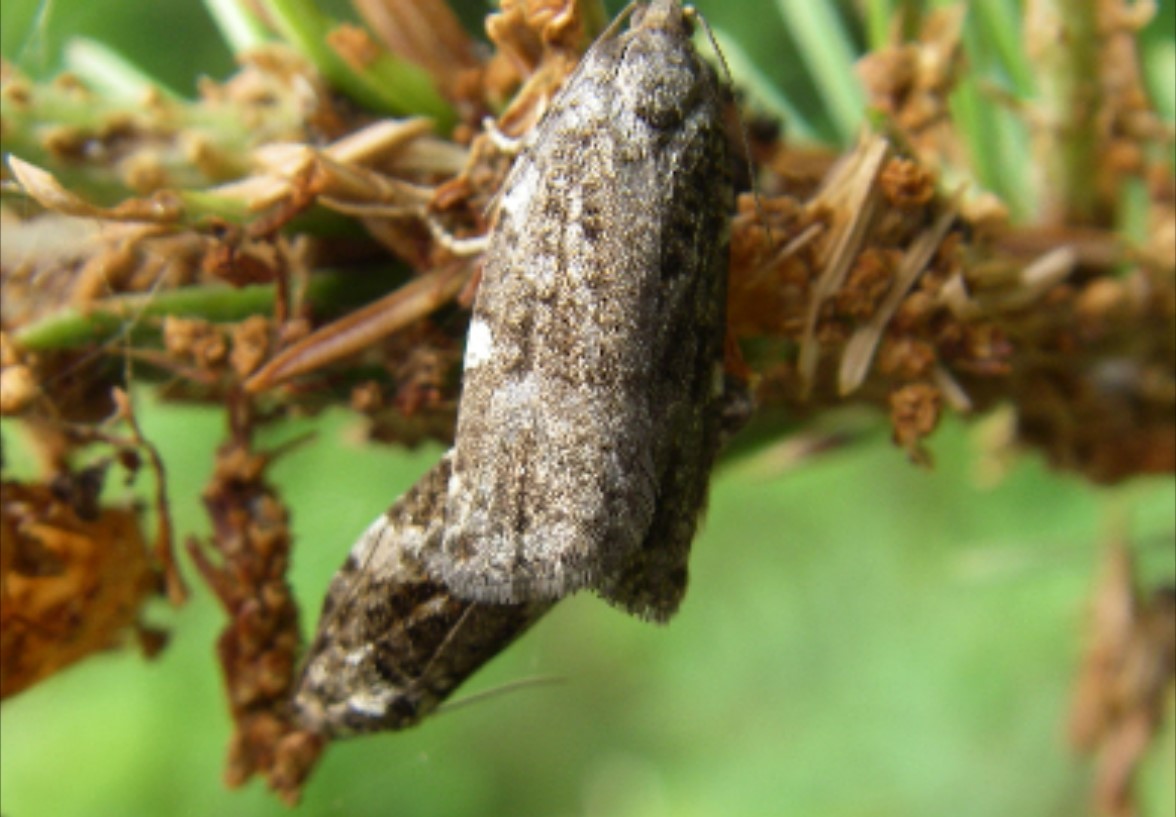Spruce budworm (Choristoneura fumiferana) is a serious pest that affects spruce and fir trees in North America, particularly in Canada and the northern United States. It is a native insect that has evolved with these trees, and outbreaks of this pest can cause significant damage to forests and landscapes.
The larvae of the spruce budworm feed on the new growth of the tree, particularly the buds and needles. This feeding can cause defoliation and stunt tree growth, making the tree more susceptible to other pests and diseases. Large-scale outbreaks can lead to widespread defoliation, which can ultimately result in the death of the tree.
Spruce budworm outbreaks have occurred in Manitoba in the past, and the province continues to monitor for outbreaks and implement management strategies to control the spread of the pest.
Sign and Symptoms
The larvae of the Spruce Budworm use silk webbing to create feeding tunnels or nests by tying new shoots together. These young larvae are wasteful feeders and may only consume the base of the needles, leaving the rest of the foliage covered in webbing, which causes the tree to look scorched as the foliage dries. If left untreated, prolonged infestations may cause branch dieback and even plant death.
The Spruce Budworm has a 1-year life cycle, and during this period, it goes through six larval phases. The larval phases begin in August and end the following July when the adult moth emerges. Between early May to late June, the larvae will feed on old needles, developing buds, and new foliage. This feeding habit often leads to the destruction of the buds before the new shoots even have a chance to expand. The young larvae are yellow with brown heads and are likely to be seen in May, while the mature larvae cause the most damage and are usually visible during the first two weeks of June. They are reddish-brown with black heads and have two rows of white spots running lengthwise down their backs.
Prevention
A tree is normally very tolerant of some defoliation and control efforts are unnecessary when only a few larval budworms are present. However, at times when the populations are high, it may be necessary to control them with the use of biological products or chemical pesticides.
Control - What you need an arborist to do
Pesticide
- Biological products like DIPEL contain the active ingredient Bacillus thuringiensis var. kurstaki (Btk) to control larvae. The product is applied to the leaves of the tree, once feeding begins the caterpillar dies with 2-3 days. The product is rainfast (resistant to water wash off) within 2 hours.


Tree Health Issues
Wondering about costs?

